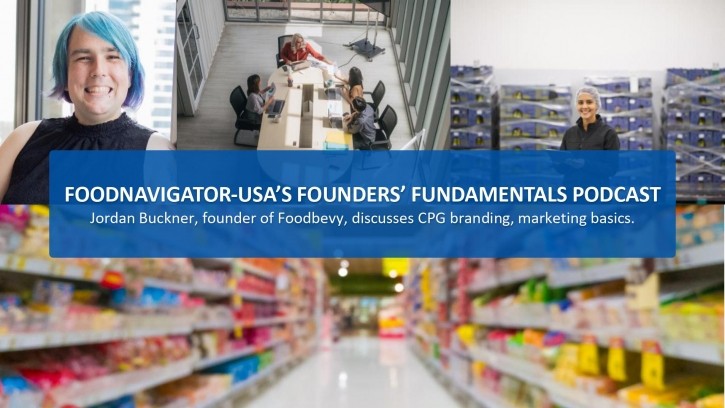Founders' Fundamentals Podcast: Understanding product-market fit, branding basics with Jordan Buckner

[Editor's note: The Founders' Fundamentals podcast is FoodNavigator-USA's monthly podcast series, dedicated to the art of building and growing CPG food and beverage brands. Click here for a list of previous episodes.]
Understanding product-market fit: ‘Do you have a product that people want’
Successful CPG brands not only develop products to solve a consumer need or want, but they also often do so without needing to educate a consumer on the product’s use, Buckner explained. Product-market fit is the concept of creating a product that can deliver on consumer demands and in a format that works best for them, he added.
"Many founders get [product-market fit] wrong, including myself when I launched TeaSquares. It is the difference between having a successful business and not,” Buckner said. "Product-market fit ... at its simplest form is: Do you have a product that people want, and can you deliver it to them at a price and a method that they [desire]?”
Before launching Foodbevy, Buckner co-founded the now-defunct tea-infused snack brand TeaSquares, designed as a more gut-friendly way to consume caffeine. While consumers demanded snack bars and ways to stay energized, “zero people ever went into the grocery store for a tea-infused energy snack,” Buckner admitted.
“Once we were in store, people would see us at the store doing a demo. They would try the product — sometimes, a little hesitantly — and they would say, ‘This is delicious, but I would not have bought it unless you were here.’ Once I could tell that story in person ... a lot of people could resonate with what the product is and maybe how they could incorporate it within their day, but they did not have an initial need or even want for a product like mine ... because they did not have any existing problem that needed to be solved,” Buckner elaborated.
Founders cannot sustain a business on brand alone
Developing an effective brand — including a logo, imagery, color scheme, etc. — is crucial in sharing a startup’s mission and vision, Buckner said. However, some founders spend too much time on branding and not enough on the rest of the business, he added.
"A lot of founders are really excited about the branding portion and come up with a really cool name [and] a really cool website ... but there is not as much of a core business underneath that brand to be able to support it. It works very well at delivering that initial hype — either towards investors or consumers — but once that hype dies down there is no core foundation underneath to support the business. You really need to develop both the business and the brand side-by-side," he explained.
For example, water brand Liquid Death found success by using bold branding and a need in the market — the need for hydration solutions — to target a consumer base neglected by other beverage businesses, Buckner explained.
‘Focus on the bottom of the [sales] funnel ... and work your way up’
When it comes to marketing budgets, many first-time founders do not take into consideration the entire sales and marketing funnel and buy advertisements to draw attention to their web or social media page, Buckner noted.
“The No. 1 mistake that I see founders make on the digital marketing side is spending a lot of money on things like Facebook ads and Google ads at the beginning, without building a strong marketing and sales funnel the rest of the way. I like to look at the marketing and sales funnel almost as a five-point system, starting at the widest point — which is awareness — going down to consideration, decision making — which is purchase — repeat purchase and loyalty,” he elaborated.
He added, “What I often found is people are pumping lots of money into ads to get people to their website, without optimizing first for those loyal customers. I actually tell founders to focus on the bottom of the [sales] funnel, which are things like loyalty, and work your way up from a dollar and time perspective.”
Similarly, when promoting in-store through demos and other activations, CPG companies should prioritize “getting as much trial in as small of a location as possible,” before moving forward with aggressive retail expansion plans, Buckner explained.
"You need to get as much revenue as possible because there are not as many dollars out there as you think there are. A lot of founders sell to one store, realize sales are not what they expect them to be — they are lower — and they expand to more and more stores versus focusing on a single store at a time and figuring out how can I maximize both my sales at this store but also do that by maximizing the number of people at this store who know about my product," Buckner said.














